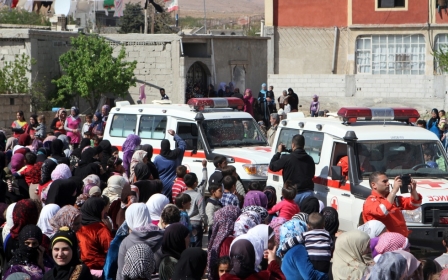Israeli forces strike targets in Syria after Golan Heights death

The Israeli air force struck several military sites across the border in Syria in the early hours of Monday morning.
The targeted strike was reportedly in direct retaliation for a missile attack launched on Sunday from across the Syrian border, which killed one Israeli national and injured three others.
Israeli air forces targeted nine military sites across the border in Syria on Monday, according to Ofir Gendelman, the prime minister’s official spokesperson.
According to a statement by the Israeli air forces on Monday, “direct hits were confirmed” during the attack, though there is no indication of any injuries sustained.
The Syrian region close to the border with Israel and the Golan Heights has been the site of sustained fighting over recent months, with rebel forces reportedly allied to al-Nusra Front gaining control of a Syrian army base near the town of Nawa.
Nawa lies approximately 20 kilometres from territory claimed by Israel after a 1974 ceasefire with Syria, and the recent rebel advance there sparked alarm in many Israeli news outlets.
Peter Lerner, official spokesperson for the Israeli Army, posted pictures on Twitter of Lieutenant General Benny Gantz “observing the border” at a site in the Golan Heights prior to the attack.
According to Gendelman, Israeli Prime Minister Benjamin Netanyahu spoke on Monday morning to Fahmy Karakra, whose 13-year-old son Muhammad was killed on Sunday by a missile fired from inside Syria.
Netanyahu told Karakra that “Israel’s enemies do not shrink from killing children. They do not distinguish between Jewish and non-Jewish citizens.”
Muhammad Karakra was killed as he sat in a truck with his father, who was working for the Israeli Defence Ministry doing maintenance on the border fence which separates Syria and Israel in the disputed territory of the Golan Heights.
The outbreak of violence on the Golan Heights is the first such incident in the volatile border area since war broke out in Syria in 2011.
However, the plateau has seen rising tension over the last three years, with a growing number of projectiles, mostly stray, hitting the Israeli side, prompting occasional armed responses.
The strategically important site, which at an average elevation of 1,000 feet offers a crucial vantage point, was unilaterally seized by Israel in 1981, and now plays host to an estimated 20,000 settlers.
Middle East Eye propose une couverture et une analyse indépendantes et incomparables du Moyen-Orient, de l’Afrique du Nord et d’autres régions du monde. Pour en savoir plus sur la reprise de ce contenu et les frais qui s’appliquent, veuillez remplir ce formulaire [en anglais]. Pour en savoir plus sur MEE, cliquez ici [en anglais].



